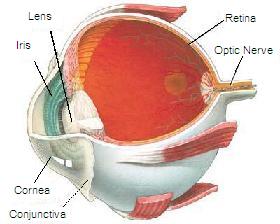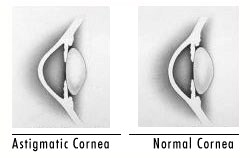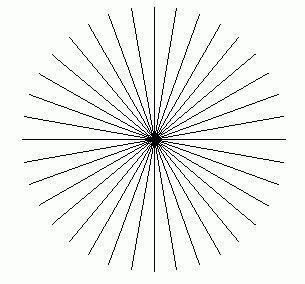Home > about eyes > Astigmatism
Astigmatism
Astigmatism
Causes
|
Astigmatism usually occurs when the front surface of the eye, the cornea, has an irregular curvature. This irregular shape prevents light from focusing properly on the back of the eye, the retina. As a result, a person's vision may be blurred at all distances. Normally the cornea is smooth and equally curved in all directions. With astigmatism, the cornea is "warped", meaning it curves more in one direction and objects appear somewhat indistinct and slanted. It can occur with or without shortsightedness or long-sightedness. Astigmatism can also occur when the cornea's shape is more oblong than spherical. Normally cornea is spherical. The oblong shape causes light rays to focus on two points at the back of your eye, rather than on just one. Many people are born with this oblong cornea, and the vision problem may get noticed over time. |
 |
Causes
 |
|
How to recognize Astigmatism?
Patients with astigmatism have blurred or distorted vision at all distances. It can also cause images to appear doubled, particularly at night. Patients have inconsistent difficulty focusing on various objects such as finely printed words and lines. Headache and fatigue are common as the person tends to strain their eyes. Squinting, eye discomfort, watery eyes, tired eyes, and irritation are also frequent.
Diagnosis
Astigmatism is diagnosed with a routine eye examination. In an eye with a refractive error, the light rays do not bend properly to achieve a single focus point on the retina. Instead, light rays either focus in front of the retina, or do not focus at a single point. A process called refraction is used to measure the refractive error of the eye. A visual acuity test is performed to determine the focusing power of the eye at different distances.
Test for Astigmatism
Look at the spokes of this pattern. If some seem clearer (more distinct and well resolved) than others, it indicates you have some astigmatism. If you don't, look at the pattern through an astigmatic lens, and experience what a person with astigmatism would see. (Please note this is note this is not a clinical eye examination and should only serve as an indicator test for self interest.)
During your regular eye examination you will will be presented with an eye chart similar to this to assist your optometrist in determining the symmetry of your eye's refraction. Ideally all refracting surfaces in an optical system should be symmetric about a common axis, but of course in the human eye this is not always the case. |
 |
Treatment
Usually astigmatism is treated with spectacles and contact lenses. Many people with astigmatism can achieve better vision with specially designed Toric lenses. They're made with the same materials as regular contact lenses but it has an additional power element called a cylinder. This cylinder has greater light-bending powers to focus light clearly. Corneal modification is another option for people with astigmatism - this is done by surgical operations.
Astigmatism is a very common disorder and is corrected with relative ease. Once diagnosed it should be monitored with an annual checkup. Click here to check in with the optometrist.
(many thanks to LHUniversity for some of the graphics used on this page)




